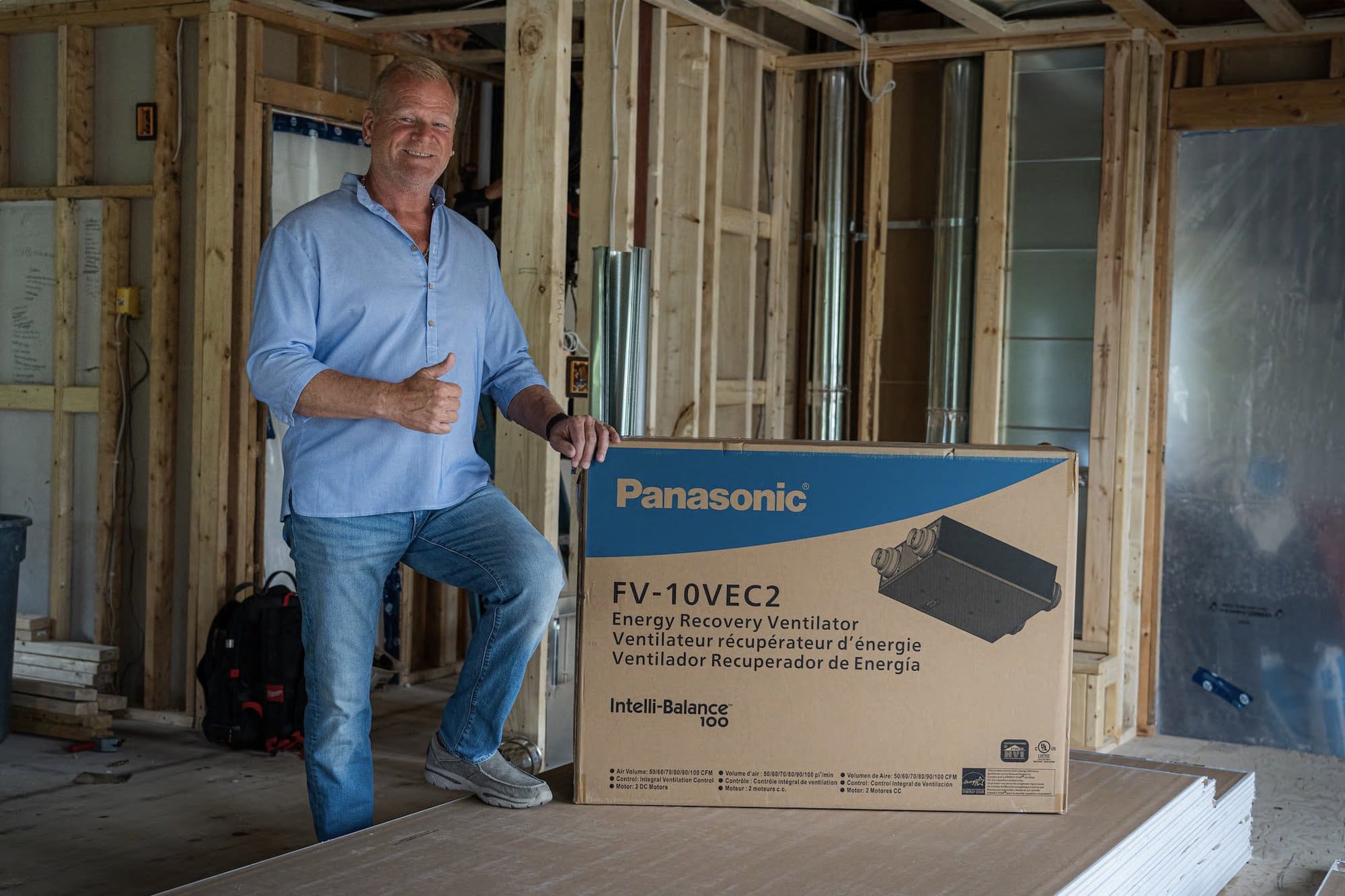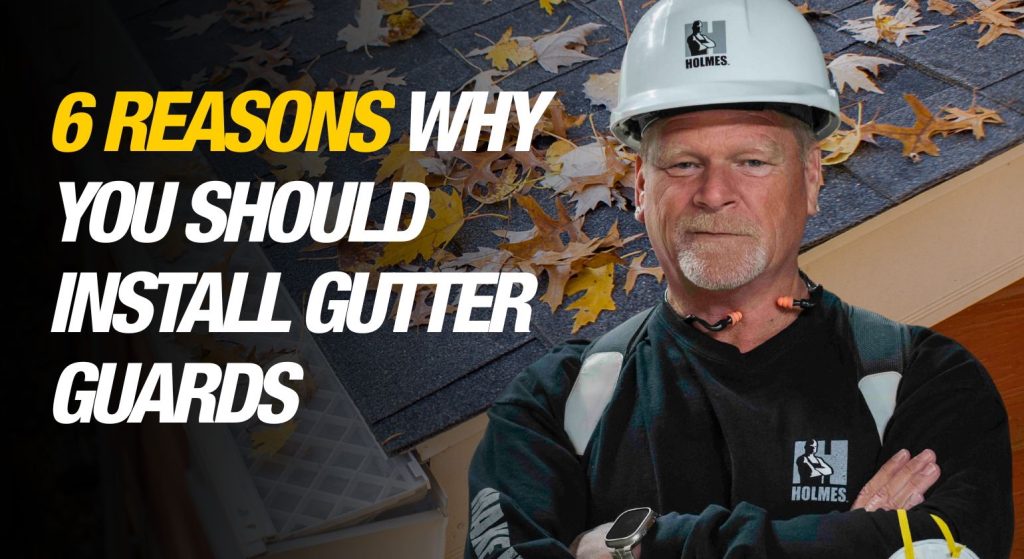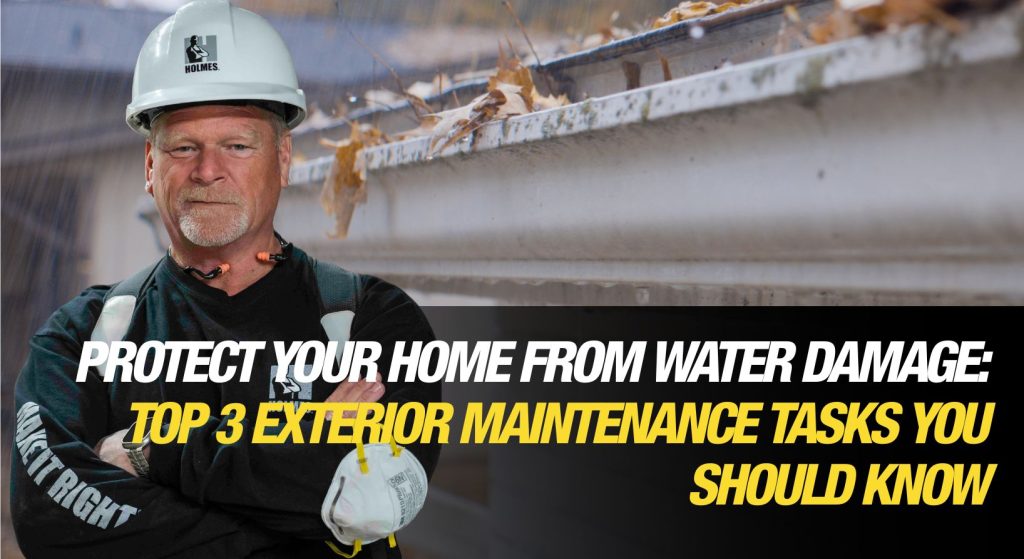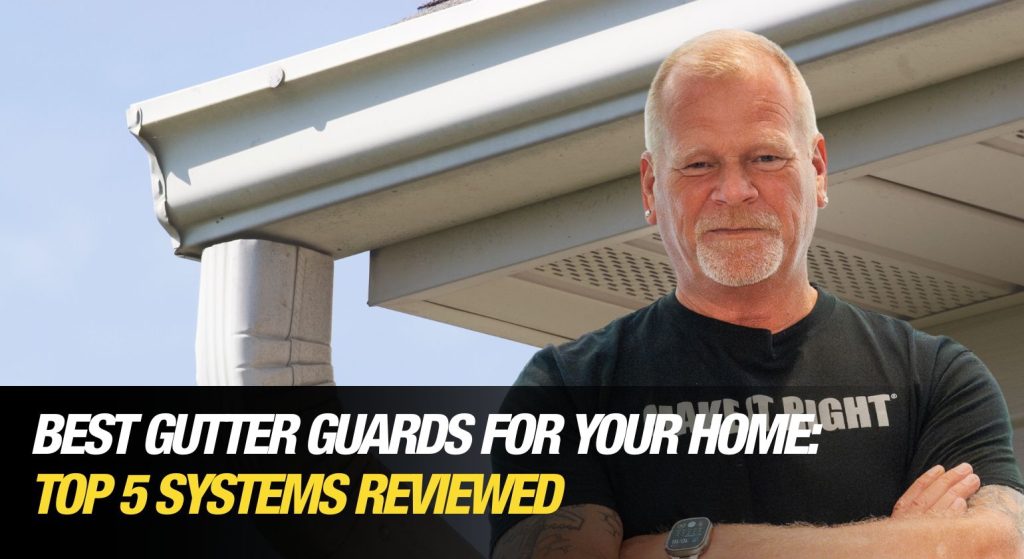Cleaning gutters is one of those chores most homeowners dread—and often put off—but it’s an essential part of protecting your home. Installing gutter guards can significantly cut down on...
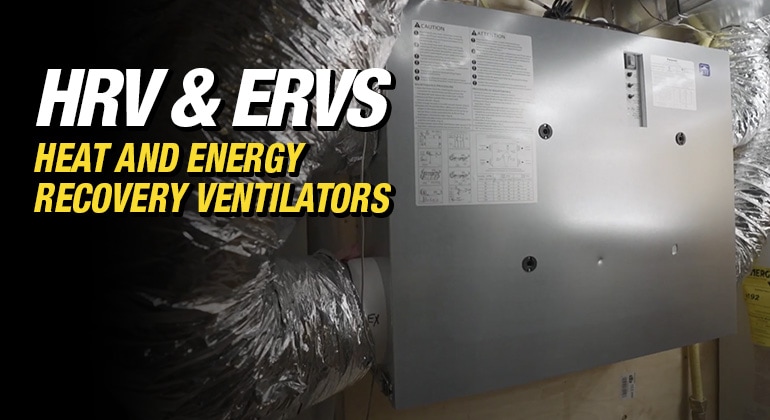
Heat And Energy Recovery Ventilators (HRV vs ERVs)
By Mike Holmes
Mike’s Advice / Home Safety & Maintenance
Tuesday, May 13th, 2025 @ 1:19pm
HRVs vs ERVs – What’s The Difference?
I’ve been talking about the importance of good indoor air quality for years. If your home can’t properly get rid of excess humidity, it can get inside your walls and lead to problems with mold and rot in your building materials. The quality of the air inside our homes plays an important role in how we feel day by day. Do you get frequent headaches? Worried about indoor allergens? I want to talk about ERVs (Energy Recovery Ventilator) and HRVs (Heat Recovery Ventilator).
My number one way for properly creating an efficient air exchange is by installing a heat recovery ventilator, or even better, an energy recovery ventilator.
What is a Heat Recovery Ventilator (HRV)?
An HRV system supplies continuous fresh air from outside in the house.
Your Heat Recovery Ventilator (HRV) should either be connected to your existing forced-air heating system, or a specially installed network of outdoor air ducts. It will feature two fans – one that expels the indoor air from your home to the outdoors, and other one that brings fresh outdoor air into your home.
The fresh air passes through a heat exchange core before it is distributed throughout your home. That core transfers heat from the outgoing stream of air to the incoming stream. This creates an efficient heat exchange that reduces the energy necessary to warm the replacement air to a comfortable temperature.
Some builders choose to install HRVs in their homes to complement airtightness in new homes.
During winter months, your HRV captures heat from the stale air leaving your house, and uses it to preheat the fresh air coming into your house. In summer months, an HRV reverses the process. It removes some of the heat from the incoming air and transfers it to the outgoing air.
The Benefits of an HRV
- When it’s running well, your HRV can recover up to 80 percent of the heat from the outgoing. This can can go a long way towards reducing your ventilation and space heating costs. Now that’s smart.
- HRVs can remove stuffy air from rooms with limited air flow, like basements, laundry rooms, and bathrooms.
- HRVs drive fresh air into more frequently used rooms like bedrooms and living rooms to maximize comfort.
- A heat recovery ventilator helps make your home healthier, cleaner, and more comfortable by continuously replacing stale indoor air with fresh outdoor air.
Some HRVs have a humidistat. I recommend installing it in a central spot in the house.
READ NEXT:
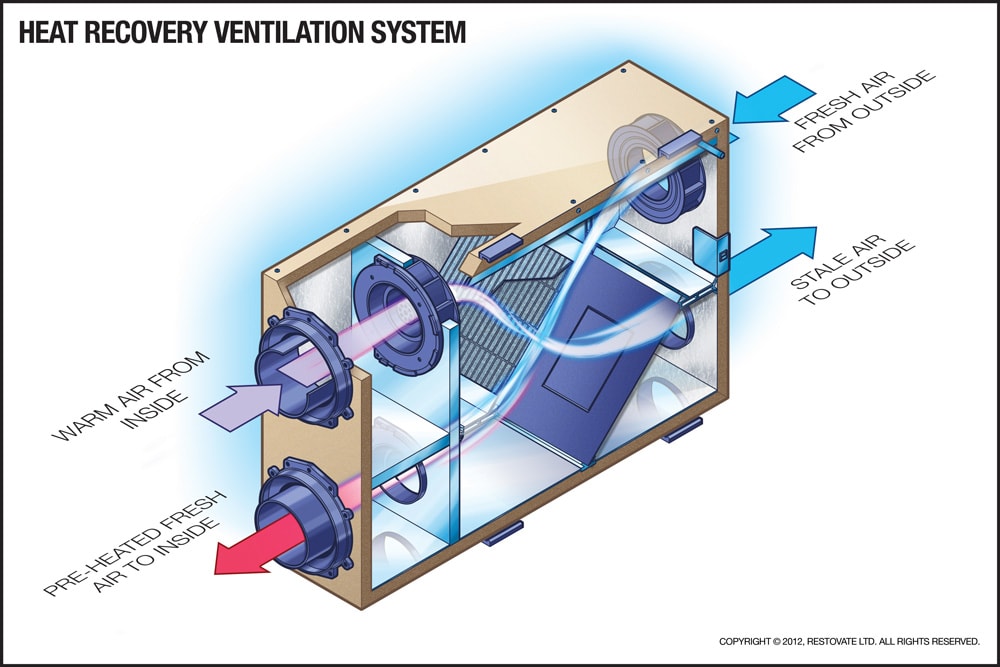
Heat Recovery Ventilator (HRV) System ILLUSTRATION
TIP: Pay Attention to Building Code Requirements
An HRV is required depending on the insulation values. As an example, Edmonton is in Climate Zone 7A. Code specifies that no HRV is required if the effective insulation is above R60 attic, R17.5 walls, and R20 below-grade basement walls. An HRV is required for insulation levels between R50-R60 attic, R17-R18 walls, and R16-R20 basement walls.
What is an ERV (Energy Recovery Ventilator)?
ERVs can exchange both heat and moisture. Energy Recovery Ventilators (ERVs) manage the moisture in the air being pulled into your home. In the winter, your ERV transfers humidity from the air extracted from your house, keeping your humidity levels relatively stable.
Opening a window is good (and something I recommend you do EVERY DAY), but it isn’t practical during hot and cold months. An energy-recovery ventilator (ERV) helps keep your air fresh without creating a potentially uncomfortable situation. During hot summer months, it’s the opposite, where moisture is pulled out from incoming air. This reduces the work your air conditioner and dehumidifier do to keep things even.
In air conditioned homes, (humidity levels outside are higher than inside), your ERV system will limit the amount of moisture coming into your home. In humidified homes, (when the humidity level is low in winter), ERV systems limit the amount of moisture expelled from your home.

An energy recovery ventilator
An ERV is ideal for warmer, more humid climates.
The Benefits of an ERV
ERVs are a great fresh air solution since the air coming from the outside can be very dry in some areas. This affects the humidity levels in our homes. When humidity falls severely, you may notice some shrinkage or warping of hardwood surfaces. Low humidity can even have an effect on your personal health, with low humidity levels causing dry, itchy skin, or cause feelings of congestion.

Panasonic Energy recovery ventilator with two (2) ECM motors and built-in SmartFlow™ technology.
Here are some reasons to consider ERVs:
- In the summer, an ERV system can reduce humidity in your home, which helps prevent mold growth and keeps air feeling fresher.
- Since an ERV pulls moisture out of your home during summer, it reduces the work your air conditioner and dehumidifier have to do to keep things even.
- Air circulating inside your home is kept comfortable, as stale air from your home is moved outside. NO ENERGY WASTED.
- If you have a large family that cooks a lot, an ERV will take care of the moisture generated from the kitchen.
- You rid of dust, dirt, pollen, pet dander and other contaminants without wasting energy.
- An energy recovery ventilator can eliminate smoke and kitchen smells from cooking. No more musty or rotting smell.
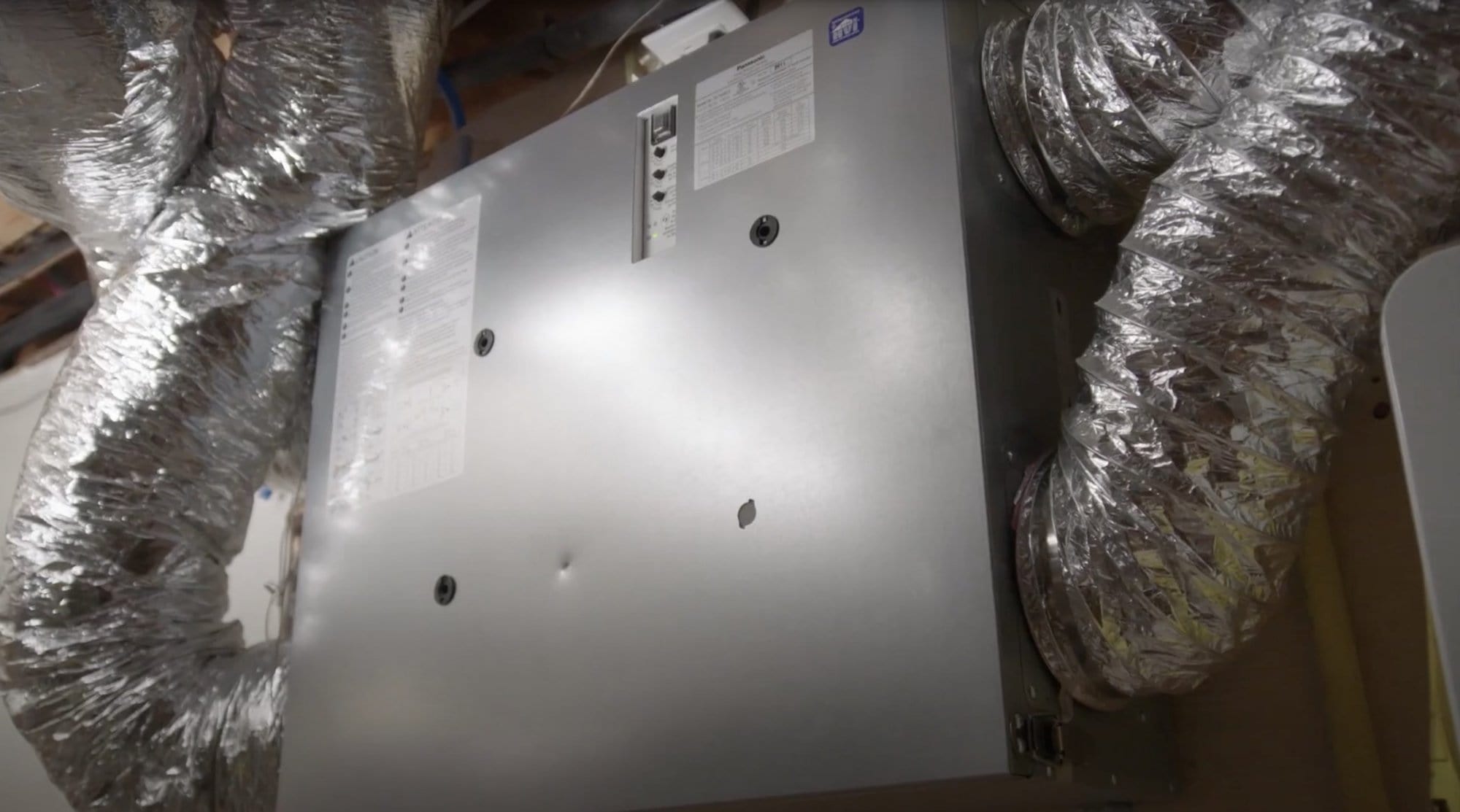
Panasonic Energy recovery ventilator installed in one of our projects.
Which Energy Recovery Ventilator (ERV) is best?
Personally, I am a big fan of the Panasonic ERVs. If you watched Holmes Family Rescue, Frank’s episode, you will see that we installed a Panasonic ERV to give them a healthy, comfortable home. You can find more information about them here.
Should I turn off my ERV or HRV?
You should not turn off your HRV or ERV unless it’s for servicing. HRVs and ERVs running continuously will ensure your home is well-ventilated and maintains good air quality.
HRV Vs ERV. Which One To Choose?
Remember that an HRV system will exchange heat and an ERV will exchange heat and moisture. The ERV system will recover heat. Not only that, but it also recuperates the energy trapped in moisture.
If you are in an area that experiences extreme weather (humid summers and dry winters), look into an ERV.
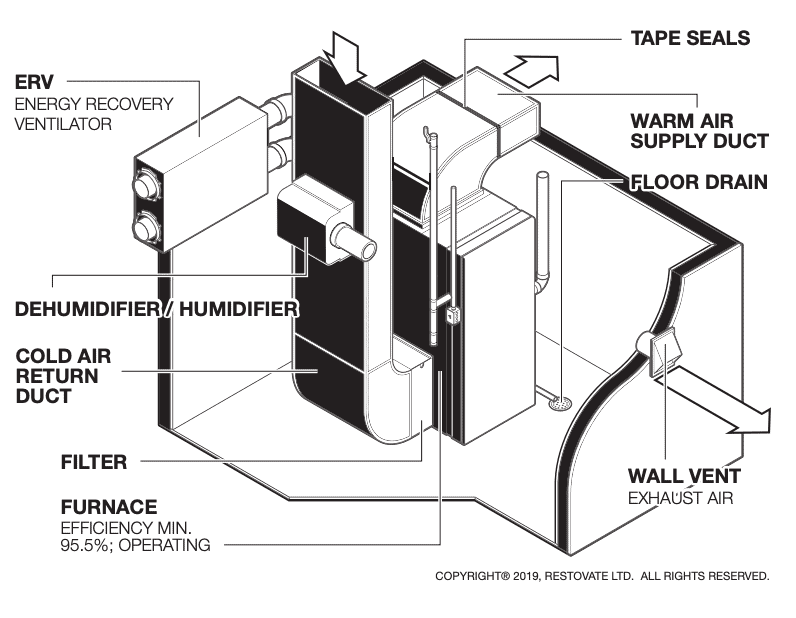
Illustration of How An ERV works
RELATED: Here is a full explanation of how an ERV works
What If I Don’t Have an ERV or HRV?
If you aren’t able to upgrade your systems to include an HRV just yet – there’s still something you can do to promote air exchange. It’s pretty simple, just open your windows for a couple of minutes a day and let some fresh air flow in. While it won’t provide the same efficient heat energy exchange that you’ll get with an HRV, it can still help you deal with minor condensation. However, this can alter your humidity levels, so I hope your humidifiers and dehumidifiers are up to the task.
READ NEXT:
